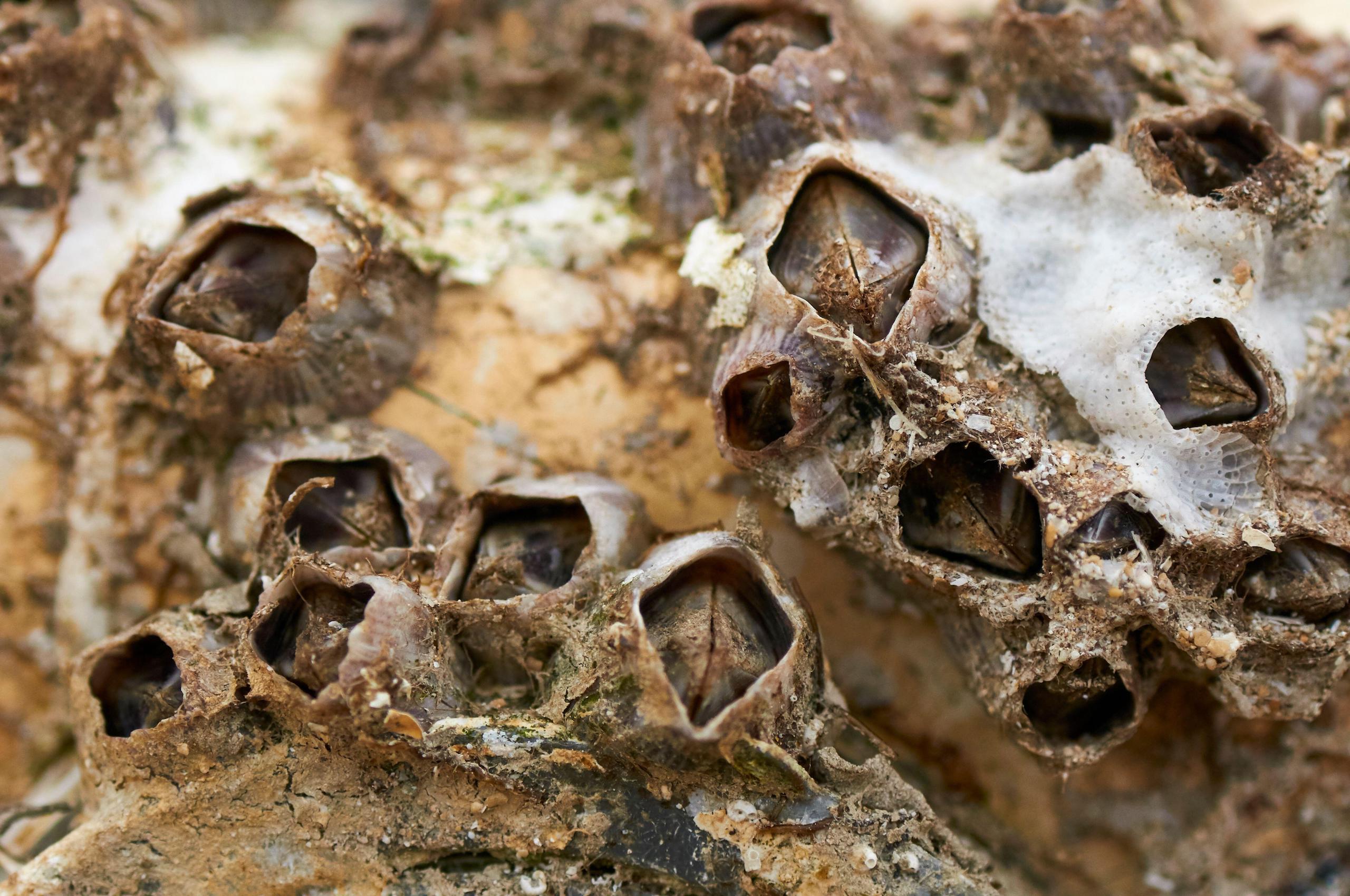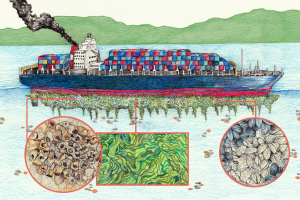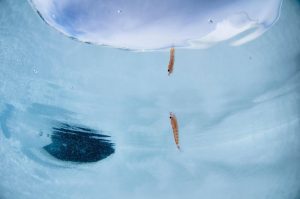Like many English words and phrases, the description of something reliable as “copper-bottomed” has a maritime origin.
It dates from the 18th century, when seafarers had long struggled with unwanted plants and animals that stuck to the wooden hulls of their ships and slowed them down.
In 1761, the Royal Navy plated the hull of its frigate HMS Alarm in thin copper, which kept away weeds and tube worms so successfully that the practice – and the praise of something risk-free as copper-bottomed – became widespread. At least it did until the launch of iron ships a century later, which unfortunately could not be copper-plated because that encouraged corrosion.
Today’s sailors still struggle with the same problem. More formally called biofouling, the unwanted build-up of sea life on the hulls of everything from pleasure boats to aircraft carriers causes drag through the water. This slows speeds and so necessitates the burning of more fuel, producing both higher costs and more carbon emissions. (The skins of sea creatures from whales to sea snakes can also become encrusted with barnacles in a similar way.)
Biofouling can have a more direct environmental impact as well. As ships criss-cross the oceans, their submarine stowaways can pose real problems to ecosystems that must suddenly learn to live with the new arrivals.
“Pretty much any surface that you put into the ocean is going to get growth on it. It’s going to accumulate biofouling,” says Kelli Hunsucker, an oceanographer at the Florida Institute of Technology. “It’s when that growth becomes too cumbersome that we see these problems. And they are the same problems that the Greeks and the Romans had. They all had issues with biofouling.”
Barnacles and other stowaways
Studies have recorded some 2,000 different species living in these shipbound communities, the barnacle family probably being the best known. Related to crabs and lobsters, these adhesive crustaceans have become shorthand for a sticky nagging problem that’s hard to remove.
Barnacles start life much more mobile, released in their tens of thousands as tiny larvae. Although they can survive for several weeks floating in the sea, to develop into adults they must fix onto a hard surface, which they do with relish. They are such a common feature of life at sea that they were once used in a punishment called keelhauling, in which an unfortunate seaman would be dragged along the underside of the ship’s keel by a rope, and so across fields of razor-sharp shells. The longer the biofouled ship had gone without being beached and cleaned, the worse the experience.

Still, the high-profile barnacle is just the most visible form of biofouling, and one that tends to appear relatively late in the process. Microscopic bacteria and algae get there earlier, feeding on the cocktail of chemicals that seawater contains.
“As soon as you put a surface in the water, organic molecules will start to adhere to it. Then within minutes or hours you get bacteria forming,” Hunsucker says. “And then it goes from there to different types of unicellular organisms, algae and quickly up to larger life like barnacles and oysters. It forms this beautiful three-dimensional community with even crabs and shrimps living in there.”
Beautiful to a marine scientist, perhaps, but not to a ship’s captain. A microbial biofilm just a few millimetres thick is enough to significantly increase drag, Hunsucker says. One study suggested that a ship with a medium level of barnacle encrustation would need 36% more power to sustain its speed than a clean one. Dry dock inspections of some 249 ships between 2015 and 2019 found that over 40% had barnacle coverage of 10% or more.
“I think this is going to become a bigger issue for the shipping companies and the cruise lines who are going to be really hit by the drastic increase in the cost of fuel,” Hunsucker says. “You don’t have to reduce your biofouling by much, but if you can reduce it then you can save a lot of money on gas.”
You don’t have to reduce your biofouling by much to save a lot of money on gasKelli Hunsucker, oceanographer at the Florida Institute of Technology
How to do that is the “million-dollar question” Hunsucker adds. And it’s a question a lot of people have tried to answer. Many still rely on the old method of hauling ships out of the water and scraping the shells and slime away. That’s effective, but not very efficient. A better strategy is to stop the biofouling forming in the first place. And to do that, besides the Royal Navy and its copper plates, shipowners have tried everything from special paints to ultrasonic waves.
In the 1960s and 1970s, such paints relied on a toxic chemical called tributyl, which is now banned because of its wider negative impact on marine life. Newer paints often rely on copper, which is also drawing criticism for possible environmental damage. Sweden has already introduced restrictions on the use of copper-based paints in some waters.
Yigit Demirel, a naval architect and marine engineer at Strathclyde University, says there could be a more environmentally friendly route to stop biofouling. As the problem is worse where water moves slowly – giving organisms an easier time attaching – Demirel is looking into optimising ship design to speed up water flow across and around the hull, and especially those regions with sluggish flow, such as towards the stern.
“Maybe we can introduce some controlled roughness, or weird shapes, to increase the diversity of the flow. Or maybe we can dramatically change the ship shape and come up with some novel profiles,” he says.
Low fuel costs have meant ship designers have not focused too closely on how to prevent biofouling, he says. The emphasis on climate change and controlling greenhouse gas emissions is changing that. So too is the understanding that biofouling ecosystems transported across the seas themselves pose a threat.
In June this year, Australia will introduce new restrictions on biofouling to prevent the entry of invasive species. These can include the need to thoroughly clean the hull of a ship in the month prior to arrival. New Zealand already operates similar rules, and other places are considering them.
It’s only a matter of time before wider international rules are in place to control hull biofouling, Demirel predicts. It’s a logical next step, given the regulatory crackdown in recent years on the movement of invasive species through ballast water.
The problem within ballast water
Ballast is needed to stabilise ships, even very big ones, in rough weather. Depending on what cargo they carry, vessels typically pump millions of gallons of water into huge tanks before starting a voyage, and then discharge it when they reach their destination. As they pump in water, they also grab whatever sea life happens to be around. When they pump it out again, many of these creatures are still very much alive – and sometimes very unwelcome in the new surroundings.
“Ships have been transporting ballast water for hundreds of years and there are a few examples where it has had severe adverse effects” says Okko Outinen, a marine scientist at the Finnish Environmental Institute, with a special interest in ballast water.
Among the worst incidents was the 1982 introduction of an American jellyfish called a sea walnut to a port in the Black Sea. The creatures flourished, depriving local species of zooplankton, and spreading all the way to the Caspian Sea. Local fisheries, which had been worth hundreds of millions of dollars each year, were wrecked.
Maybe we can dramatically change the ship shape and come up with some novel profilesYigit Demirel, naval architect and marine engineer at Strathclyde University
In the other direction, ships travelling west across the Atlantic managed to introduce zebra mussels from Europe to the Great Lakes of Canada and the US, where they have caused havoc. “They have very sharp shells that swimmers cut their feet on, and they are able to reproduce quickly and may occur in very high densities, as well as block underwater pipes used in cooling systems by local industries,” Outinen says.
In response to the growing threat and costs of invasive species spread by biofoulled ballast water, the International Maritime Organisation (IMO) drew up regulations in 2004. These came into force in 2017 and declare that “ships must manage their ballast water so that harmful aquatic organisms and pathogens are removed or rendered harmless before” it is released.
It’s a big change for ship operators, Outinen points out. “So, at the moment we are in an implementation and experience-building stage, with the penalisation rules not being fully implemented or enforced yet,” he says. “We’re now figuring out everything related to how ballast water treatment systems work in different freshwater and marine waters. How do we monitor and sample ballast waters in a reliable, quick and cost-efficient manner? How do we detect how many organisms are viable or living? And many other similar practical details.” Once these issues have been worked out, the rules are scheduled to be more rigorously enforced in 2024, he adds.
Some of the problems posed by biofouling and ballast water, such as the transfer of invasive species, are the same. So are some of the possible solutions. One is using ultraviolet light to kill unwanted sea life. In an echo of the Royal Navy’s brainwave to install copper sheets back in 1761, some are experimenting with high-tech tiles that contain ultraviolet light bulbs, which can be fitted to a ship’s hull. If it catches on, then who knows maybe “UV bottomed” will be the latest maritime phrase to enter the English language.









